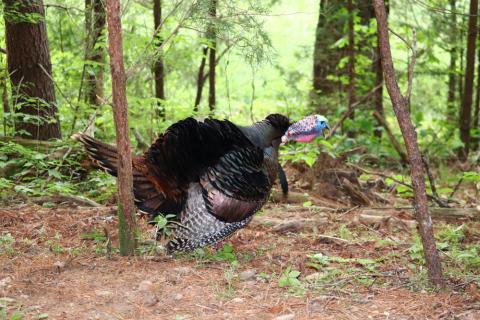Bill Marchel | Originally published in GameKeepers: Farming for Wildlife Magazine. To subscribe, click here.
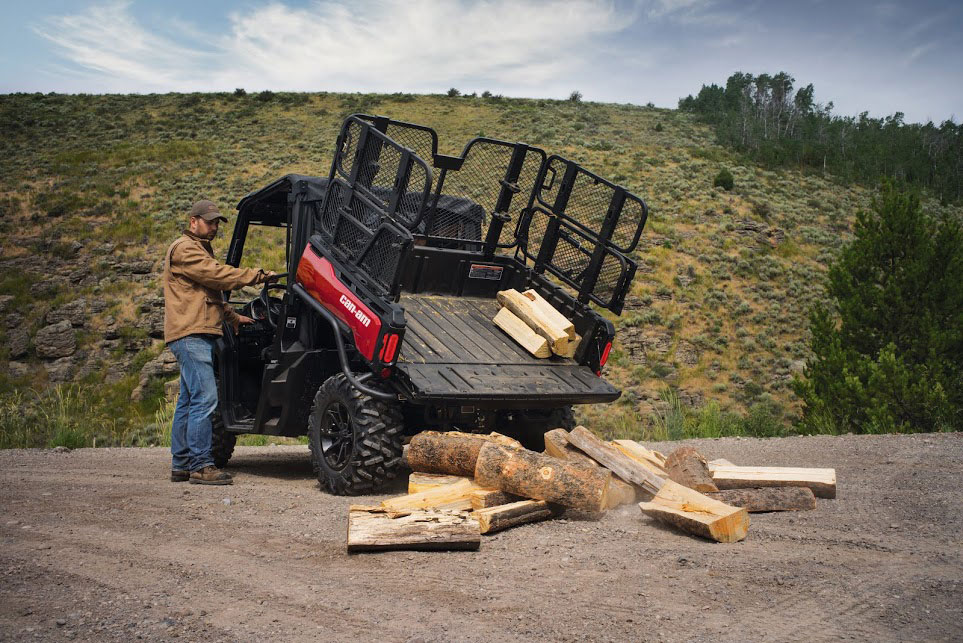
Not long ago, the idea of “farming for wildlife” seemed rather absurd to some people. A lot has changed in recent years and many folks now own land purely for their enjoyment, whether it be for hunting, wildlife viewing, or other outdoor recreation.
More than two decades ago, I purchased 70 acres of land in central Minnesota. Since then, I have carried out many habitat projects, including planting food plots for deer and other wildlife, selective forest harvest, and planting thousands of trees and shrubs. To complete those projects, I used an ATV and some of the many handy add-ons that are available - especially for a 3-point hitch and category-0 attachments - making my ATV a more valuable tool. No longer was my machine just a toy.
Many people are not aware of the farming capabilities of an ATV or UTV when outfitted with a “3-point hitch” and attachments. The implements are attached to the ATV or UTV via a 3-point hitch. The 3-point hitch mounts to the machine by a standard trailer hitch. The various implements connect to the 3-point hitch with three basic lock pins, so switching implements is easy. No nuts and bolts are required. A simple push of a rocker switch located on the handlebar of the ATV raises and lowers the implements using an electromechanical screw-driven lift system that runs off the ATV’s battery.
You might be wondering why a person would use an ATV or UTV for habitat work when a farm tractor, with its greater power and larger implements, would work better.
First, many hunters and landowners already own an ATV or UTV. Others can’t justify the purchase of a large tractor, or possibly cannot physically get a larger tractor to a remote location. With the addition of a few implements, ATV owners can use their machine for work and play.
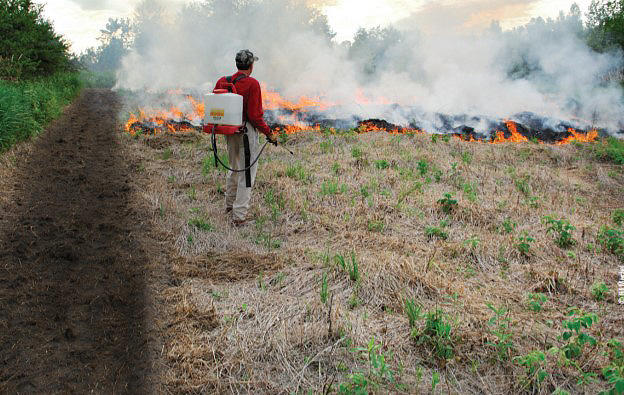
In my case, I purchased an ATV specifically for habitat work because many of my projects are in remote, swampy sections of my land and it would be difficult, if not impossible, to access those areas with a larger tractor. I love the fact that I can raise my implements using the 3-point hitch when I drive through mud or other rough terrain while on my way to my plots. Plus, most of my food plots are contoured to the lay of the land, and thus are odd shaped, requiring tight turns not possible with a larger tractor.
My ATV, when equipped with a 3-point hitch and various farming implements, is highly maneuverable. When in a tight spot and unable to move forward I can simply raise whatever implement I’m using at the time, back up a bit, turn, lower my implement, and then resume working. When I do get stuck, (and I do) I simply extract my machine using a winch attached to the front of the vehicle.
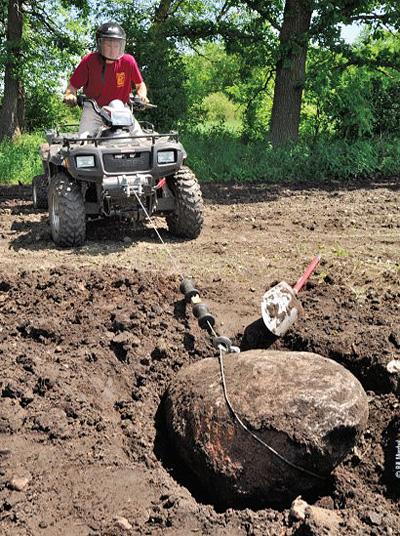
possibly pulling you out of a “bad situation,” a winch can
raise and lower a snow plow, help to load or drag a deer, or
pull a huge boulder from your food plot.
Over the years I’ve accumulated an assortment of ATF farming implements to aid me in working my land, both tow-behind and attached. For the 3-point hitch my category-0 attachments include a disk, a one-bottom moldboard plow, a seven-tine cultivator, a rear plow blade, a one-row drill planter, a one-row furrower (works well for planting tree seedlings), and a rake. Not only can I raise and lower these seven implements with the electromechanical 3-point hitch, I can also apply about 300 lbs. of downforce via the hitch. That downforce allows the implements to function more aggressively in compacted soil, and not “float” atop the ground while working like many ATV implements do. My ATV tow-behind attachments include a heavy chain drag made of 3/8-inch diameter tines and links, a tow-behind trailer, a mower, and a seed and fertilizer spreader with a 600 lb. capacity (great for applying lime). Mounted on the front of my machine is a winch with 3500 lb. of pulling capacity. (A winch works great for skinning deer.) During winter, I attached a front snowplow blade (Minnesota remember?) which I raise and lower using the winch. Clearing snow from my driveway is a snap.
To help the reader understand how often I would use my ATV and attachments to prepare and plant a oneacre food plot of BioLogic Non-typical Clover, here are the steps I would take:
- Obtain a soil sample from the future food plot and have it tested by BioLogic Labs. This is very important and should not be overlooked. The cost is minimal and will ultimately save you money. Test kits are available from BioLogic and include easy-to-follow instructions.
- In early spring I would create a firebreak around 88 the plot using the disk, cultivator, or drag, or a combination of the three. After obtaining a burning permit I would burn the dead vegetation. Another option would be to wait until the weeds have grown to about 12 inches tall and then spray the plot with a herbicide using the 14-gallon sprayer mounted on the rear rake of my ATV.
- A month later, if I had sprayed the plot and the vegetation was dead and dry, I would burn the plot, again using my ATV and implement to create a firebreak. Burning removes most of the dead vegetation which makes plowing, disking, or cultivating easier since the implements will not become clogged with weeds.
- Till the soil using the moldboard plow, or the cultivator. Then break up the sod clumps with first, the disk, and then the chain drag, until a fine seedbed was achieved. Working the soil for the first time is protracted process, and usually requires many passes. But once the sod has been broken, future tilling is much easier.
- Apply fertilizer according to the results of my soil test, and add lime if needed, using the pull-behind spreader attached to my ATV. Drag or disk in the fertilizer and lime. A note about lime: In my area, most soils need lime to attain the proper pH. You may, or may not need to apply lime in your area. An old adage among farmers is “lime doesn’t cost, it pays.” I’ve found that to be true.
- Plant BioLogic Non-Typical Clover. For planting small seeds like clover, I use a hand crank seed spreader. For larger seed like corn or soybeans I use the pull-behind spreader.
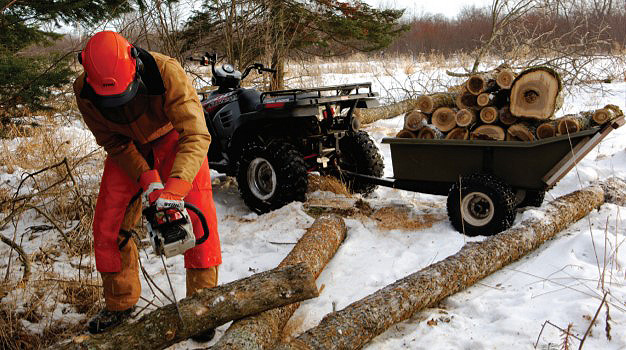
Recently, my 20 year-old 3-point hitch gave out and it needed to be replaced. Therefore, I purchased a new hitch from Kolpin Outdoors. Fortunately, all of my current category-0 implements fit the new 3-point hitch. So, I’m back in action.
A quick on-line search or a visit to your local ATV dealer will reveal more than a few companies that manufacture and sell a multitude of implements for ATV’s and UTV’s. Most people would be amazed at the amount of work a properly equipped ATV or UTV is capable of performing, and companies are introducing new products all the time.
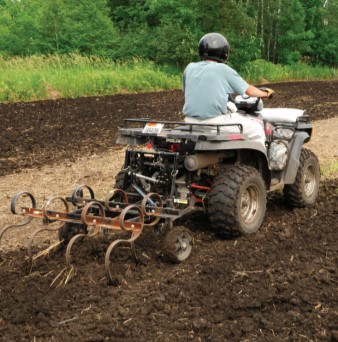
originally breaking sod, disk and plows on a
3-point hitch tend to work better because they
bring a bit more weight to the equation. Once the
plot is initially worked, ATV implements are all you
need to perform all steps in the planting process.
It is recommended that if using your ATV or UTV for planting food plots and other heavy work that you purchase a machine with a motor of at least 500 cc’s. Bigger is even better. In addition to food plot construction and light farm use, an ATV or UTV equipped with various implements can be used for a variety of chores such as gardening and lawn maintenance. No need to rent that garden tiller each spring. Don’t forget snowplowing, hauling wood, and clearing and mowing woodland trails. Uses for an ATV or UTV equipped with the many available accessories are limited only by one’s imagination. Implements are available to convert your machine into a four-season “workhorse.”
An ATV or UTV is not cheap, and neither are the implements. But what hobby isn’t? A 3-point hitch definitely helps to get more bang for the buck. Wildlife habitat work is rewarding, good exercise, and a great excuse to get outdoors and an ATV with the proper implements will save you time, elbow grease and help you get the most from your property.

















